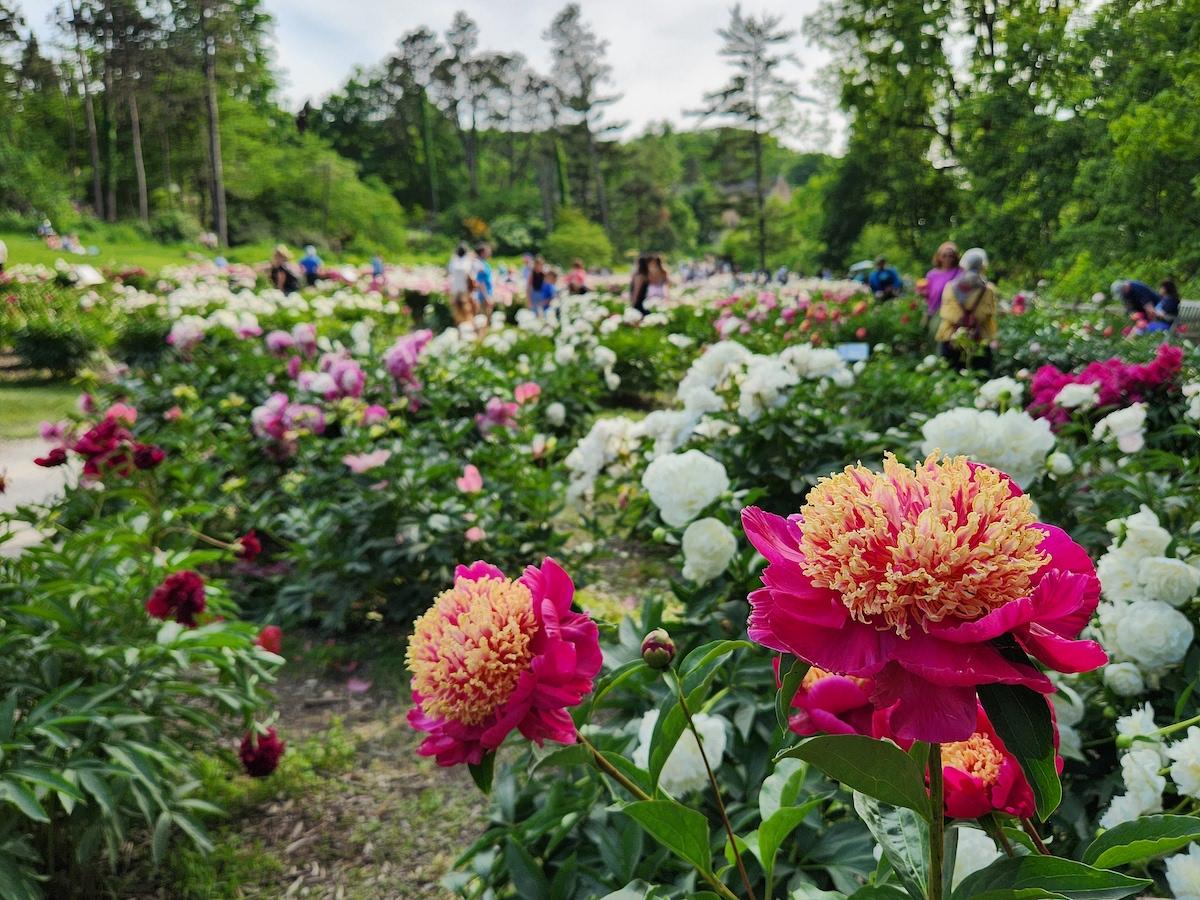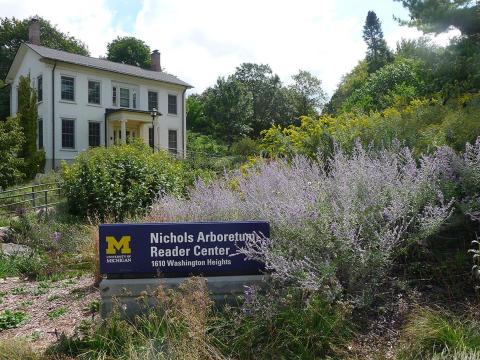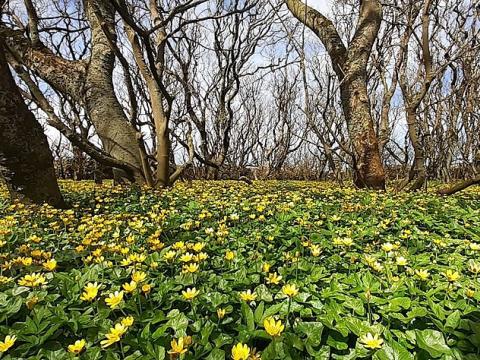
This year, the peonies at the W.E. Upjohn Peony Garden are blooming earlier than usual, sparking interest and questions from the Nichols Arboretum community. Seeking insights, we've reached out to MBGNA experts Dr. David Michener (Curator) and Doug Conley (Horticulture Lead). Together, they provide an understanding of the environmental conditions prompting this early bloom and share their expertise on how local gardeners might adjust to the earlier gardening season.
Can you describe the typical progression of the peony blooming season at the W.E Upjohn Peony Garden? Is there any precedent within the garden's documented history for an early onset of peony blooming as we are seeing this season?
Doug: On average, “Peony Season” begins in early May when the tree peonies around the garden perimeter bloom, which lasts around two weeks. This overlaps with some of the very early herbaceous peonies which generally arrive around the third week of May. Peak bloom, when more than 50% of buds are flowering, kicks in just after Memorial Day and continues into the second week of June. Typically, the show drops below peak (50% bloom) the third week of June As the late bloomers arrive. Most years, a thunderstorm or heavy rainfall concludes the show by the end of June.
David: I’ve never seen a season start this early or progress so quickly. I believe what we are seeing is that peonies (among other plants) respond dynamically to weather conditions, specifically temperature and moisture.
To what extent can we attribute this early bloom to the warmer spring temperatures? Are there other environmental factors that might be influencing this phenomenon such as altered precipitation patterns, unusual winter conditions, or changes in frost dates?
Doug: Day length and temperature, especially soil temperature with peonies, are the primary triggers for flowering. We had a mild winter without deep frost in the ground meaning soil temperatures were warmer than average coming into March as illustrated by this graph and continuing through May. This means the plants were ready to “pop” when conditions were right. with April’s mild temperatures and record rainfall providing conditions for a quick growth spurt and flowering once the very warm temperatures arrived in May.
David: Above-normal temperatures are likely the main driver, beginning with warmer temperatures early in the season to bring the subterranean buds out of dormancy. Adequate rainfall for the rapid growth is also critically important. If we had had a drier spring I think we would have seen many of the buds be aborted or deformed. Most people don’t realize that a flower that can open so quickly is due to almost all the petal cells being formed but not expanded. They are basically inflated with water and the cell walls weakly-rigidified. This is done with minimal carbohydrate investment (the walls aren’t strongly reinforced, in contrast to most leaves) so the petals collapse - we call it wilt - with minimal loss of invested resources. The opposite are long-lived flowers as some tropical orchids, which also have very slow bud development as the flowers are very long-lived.
What potential impact does the early bloom of the peonies have on the local ecosystem, especially concerning the symbiotic relationships with their pollinators?

Doug: Phenology is studying the sequence of natural phenomena such as flower bud formation or insect hatches and similar. In an effort to predict and track these phenomena, scientists created a model called Growing Degree Days (GDD). This model calculates “the accumulation of heat units above a threshold”. For this conversation, I selected GDD50 for a threshold and 2024 is tracking well ahead of 2023 when peonies were still blooming the third week of June. For example, on May 15, 2024, we had accumulated 315 units versus 228 units in 2023. This directly correlates to the previously mentioned above average temperatures and the result is a very early bloom. Temperatures remained very warm leading into Labor Day weekend leading to a shortened bloom window, unfortunately. From a phenological perspective, the sequence of event occurrences remains the same but the start date is earlier, and, in some instances, the event occurrence was compressed.
Finally, based on the early bloom phenomenon, do you have any recommendations or tips for local gardeners and plant enthusiasts in managing their own gardens in the face of shifting seasonal patterns?
Doug: It’s going to be a long growing season! A warm May does not mean a hot summer, although it might. But we are in full summer mode at Matthaei-Nichols which means paying attention to proper watering. Harvests may be a bit earlier for fruits and vegetables, which could be bountiful but also may mean fertilizing. It truly depends on the actual weather throughout this season…

David: Agreeing with Doug. At home, I’m years into shifting my garden selections to plants that take less water and can stand the temperature gyrations. Put bluntly - if plants in the ground need regular water (annuals in pots not included) I plan on what will replace them. That may sound brutal, but gardening is the art of interweaving vision and reality to create beauty. You can’t get to beauty by denying reality. You build on reality.


